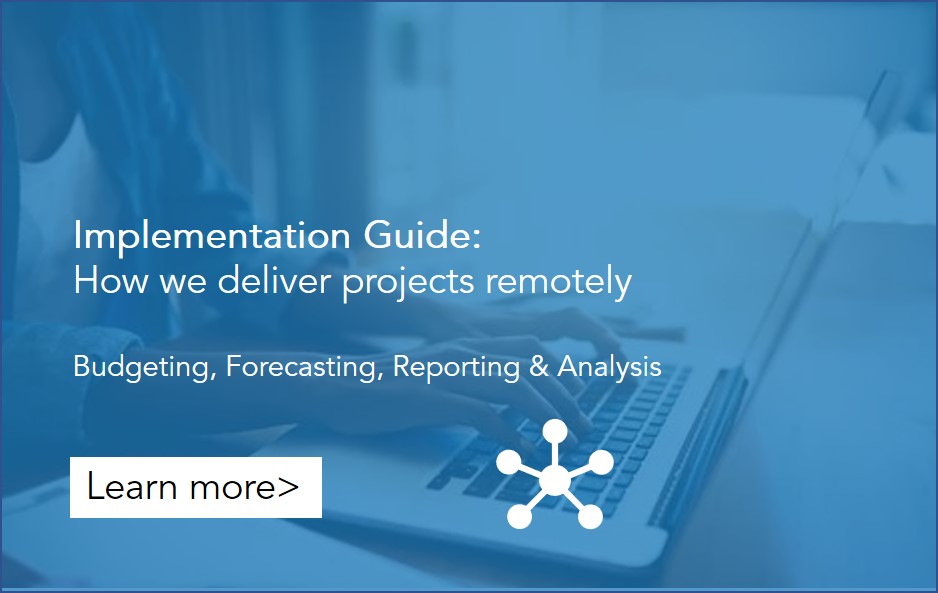Remote Working at ICit is Business as Usual
ICit has delivered over 450+ projects to 250+ customers using our tried and tested business analytics agile implementation methodology. A similar approach is used whether projects are run on-site or remote working – to ensure deadlines are met with successful outcomes. So if you don’t have experience of deploying a system implementation project remotely, here is our guide path…
With the recent onset of Covid-19, many businesses are re-organising their operations to enable staff to work from home (WFH), particularly in Finance and Administration roles. At ICit we have been delivering projects, providing support and conducting managed services remotely for many years. Whilst the shift to remote working may be disruptive for some, rest assured that we are highly experienced and comfortable in helping customers work this way. To ensure successful projects, the fundamentals are the same, but with even more emphasis on regular communication.
Design and Planning Remotely
The high-level scope can be discussed over the phone. We have a systematic checklist to cover and can complete this typically within 2 hours. This provides a good outline as to what needs to be delivered and by what timescale. When the time comes to project kick-off, the first task is to conduct the design and planning (D&P) workshop. The purpose of this it to check whether there have been any changes to the initial requirements and then to map out the detailed tasks and responsibilities for the project team.
When running the D&P session remotely, it is important to set expectations of what can be achieved using conference and video calls and to have structure; working to an agenda, allowing time for comfort breaks, and ensuring there is time at the end of the day to document the output of the sessions.
The resulting D&P document sets out the baseline project plan. However, before commencing the implementation stage, all stakeholders need to review, agree and sign off the D&P document. Any subsequent changes in scope (if required) are subject to a change control process.
Remote Working Implementation
To deliver a successful project remotely requires discipline and focus from the project team. Day to day diary management and communication is key, as is remembering to join the scheduled video calls – its easy to forget if you are engrossed in the solution build phase (so it’s useful to set-up reminders). Ideally, a project manager or administrator will manage diaries (using Outlook or Microsoft Teams for example), scheduling daily scrum meetings (to confirm the days ahead activities) and sprint reviews (what happened yesterday).
Testing Remotely
In order to ensure the solution meets business requirements, the task of testing is largely the responsibility of the customer. The D&P plan will include ample time for testing, and we can’t stress too strongly how important this task is! Spotting any glitches early and resolving them keeps the project on track and is key to overall success. However, we also recognise that collaboration and interaction between the model builders and end users throughout the testing period is necessary. Again, the key is to have easy to use communication channels – phone, video, email – and to respond to queries as quickly as possible.
The project manager may adopt the role of User Acceptance Testing (UAT) lead to consolidate all issues and report to the project team – this also reduces the risk of duplication of effort and allows issues to be ranked.
Remote Working Deployment
The key outcome of the deployment phase is to achieve user acceptance (i.e. that the solution is fit for purpose). The project handover day is a key milestone – it means that all tasks have been completed and the solution is ready to use! Congratulations!
However, as we now enter the operation phase of the project, it is important to consider “early life” adoption procedures:
- Weekly feedback session with end users on their experience
- Develop a training plan for any new staff (end users and inhouse model builders)
- A change management process and documentation
The Human Factor
Whilst working remotely has some challenges, managed properly it can be a more efficient way of working. Remember that projects consist of people, processes and technology – in that order! Good project management and open and regular communication are the simple keys to success.
It is also important to remember the human factor. Working remotely doesn’t have to be soulless! Building up rapport and good working relationships helps build momentum and even allows us to have some fun along the journey– a problem shared is a problem halved.
Written by Mark Bodger BA(Hons) ACMA, Business Development Director
28 March 2020
In Safe Hands
With over 20 years’ experience, 450+ projects and 250+ customers, we have seen every imaginable challenge in delivering successful FP&A projects. Whilst the current environment is forcing more remote working, this should be embraced and may become the new norm for many businesses in the future. At ICit it is a natural deployment method and we look forward to delivering success to many more customers in the years ahead. See our Consultancy Services for more details.








